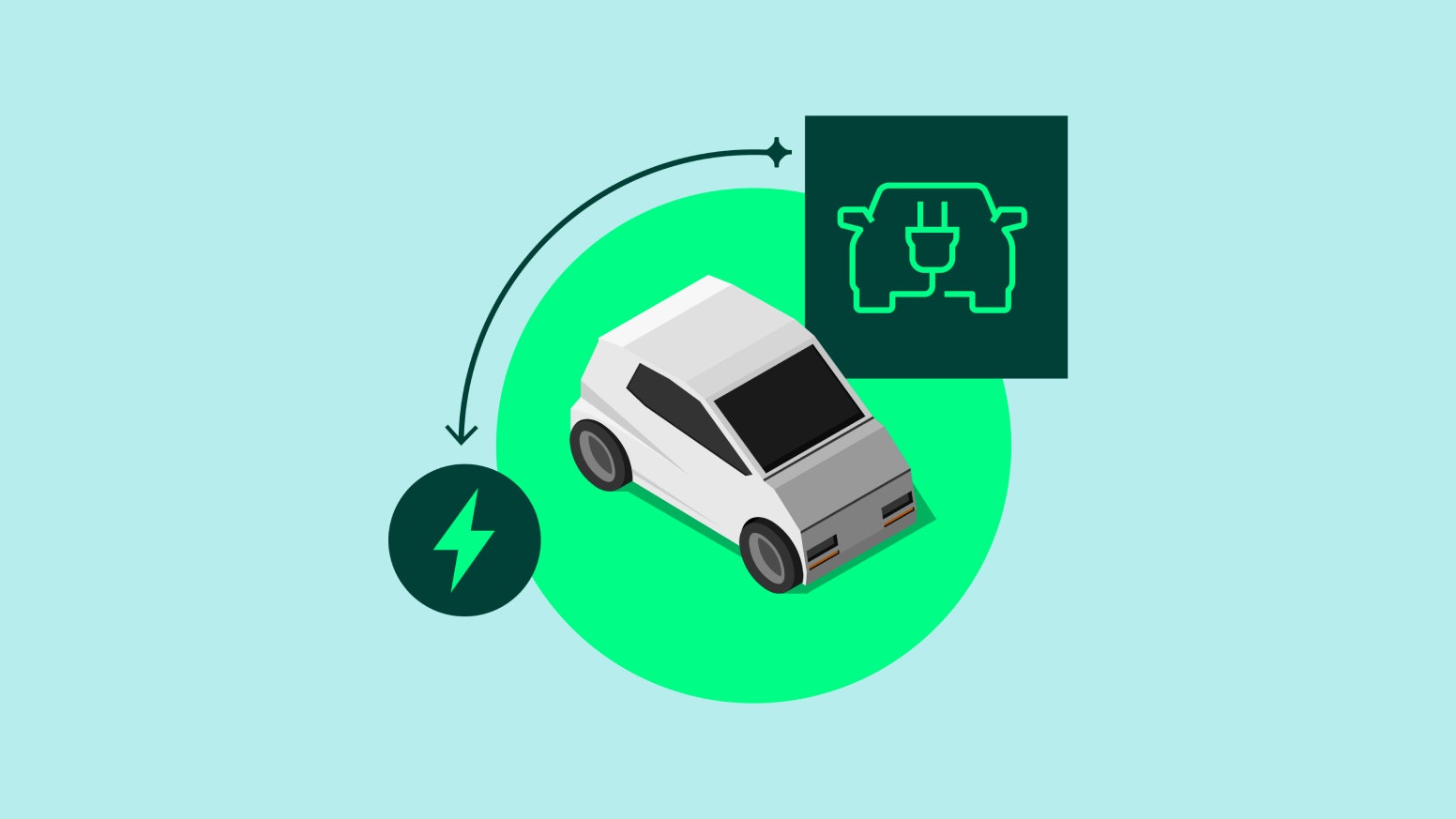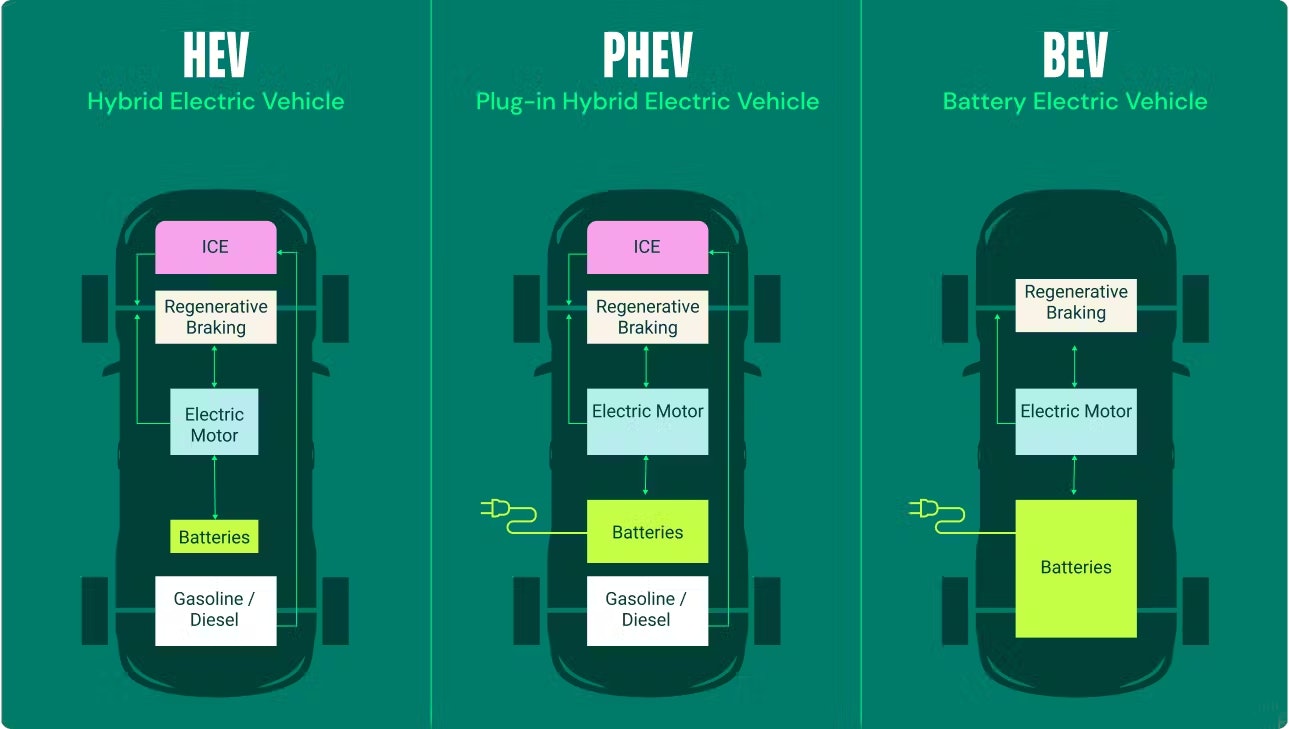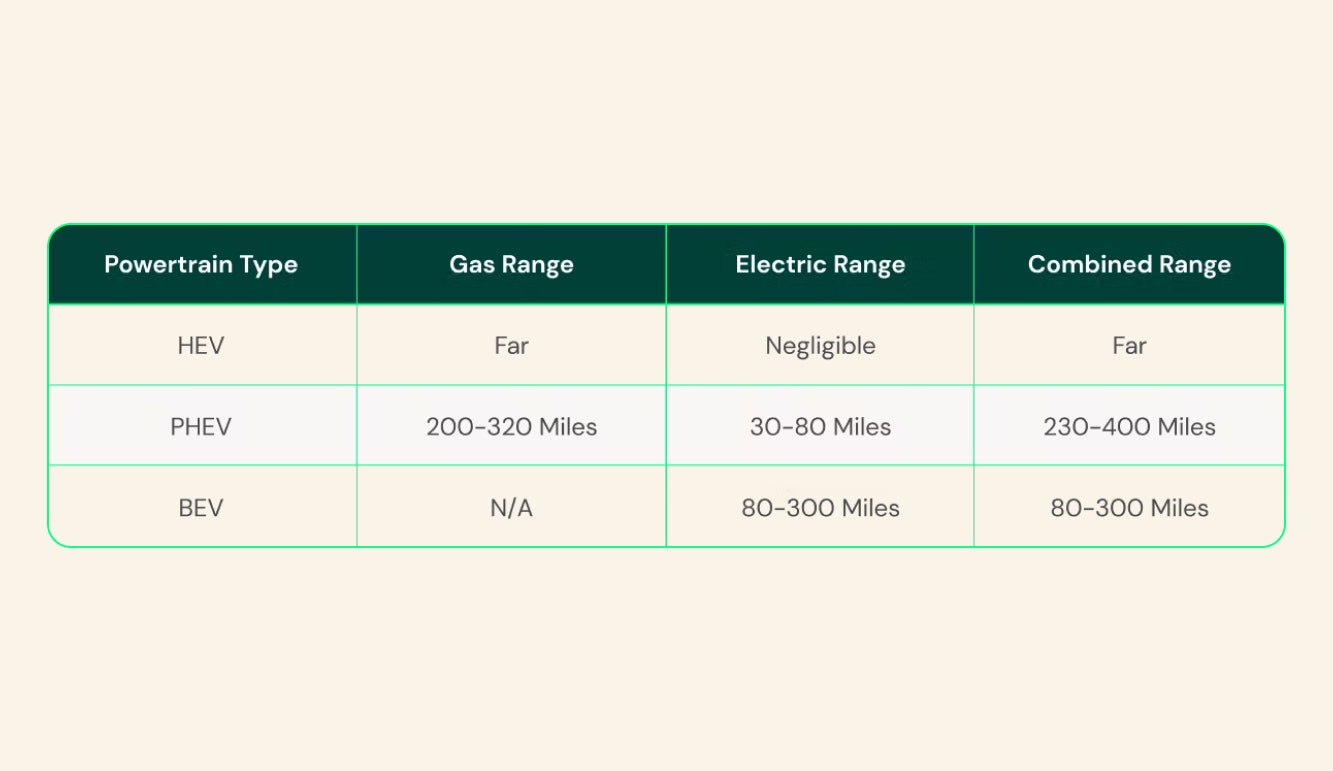Your guide to the EV powertrain

The powertrain, as its name suggests, provides power to your electric vehicle. There are three main types or classes of EV powertrains, each with their own pros and cons. Whether you choose to drive a Hybrid Electric Vehicle (HEV), a Plug-in Hybrid Electric Vehicle (PHEV), or a Battery Electric Vehicle (BEH), understanding the differences between each type will give you the power to choose the perfect powertrain to fit your needs.
What are the three main types of EV powertrains?
The design of electric vehicle powertrains are split into three classes: Hybrid, PHEV, and BEV.

Traditional hybrid electric vehicle (HEV)
HEVs essentially combine a gas-powered car with a small battery. The battery is used for accelerating at lower speeds and is typically charged when the car slows down by converting the car’s motion into stored energy, aka. regenerative braking. If you’re especially worried about the availability of charging infrastructure, a HEV might be for you, but you should also consider a PHEV.
Pros:
- Nice marriage between battery packs and internal combustion engines
- Lower tailpipe emissions (but not zero-emissions)
- Lower fuel costs
- Less polluting around the city
- Depends on traditional gas stations, so no need to find a charger
Cons:
- Tend to be mechanically more complex, which can lead to increased maintenance costs
- Emissions exacerbate air pollution and climate change
- Batteries are sized only for an electrical “boost”, so you do very little emissions-free all-electric driving
Plug-in hybrid electric vehicle (PHEV)
Think of these as super-charged hybrids. They have larger batteries than classic hybrid HEV's, but can only go 30-50 miles all-electric before the gasoline engine kicks in. PHEVs might be a good choice for you if you want to substantially reduce your emissions and drive primarily around town, but aren’t ready for the sometimes higher price or electricity-dependence of a pure BEV.
Pros:
- Similar to a traditional hybrid but with a much larger battery pack in charge of powering the vehicle
- Allow you to plug in a charger to increase their electric range but aren’t solely dependent on electricity like a BEV
- Can travel dozens of miles on electricity alone
- Pollute significantly less than hybrids
- Require less for fuel costs
- More powerful batteries allow them to accelerate quicker than traditional hybrids or gas vehicles
Cons:
- Their batteries are sized only for an electrical “boost”, so you do very little emissions-free all-electric driving
Fully electric (BEV, or battery electric vehicle)
These are all-electric vehicles and quickly becoming the new standard for EVs.
Pros:
- Batteries are much larger than hybrids to provide more all-electric range
- Simpler and cheaper to maintain powertrain design whereby the power from the vehicle’s battery is delivered directly to one or more motors attached to the vehicle’s axle(s)
Cons:
- Requires a source of electricity for charging – you cannot fill up at a traditional gas station – with a full charge at home typically being done overnight with a Level 2 charger. Using a public DC Fast Charging Station can get a BEV ~80% full within 30-60 minutes.
- Requires more planning for charging on trips that exceed a single charge’s electric range
Electric range
Electric range is the distance you can travel on energy stored in the battery while gas range represents how far you could travel if the battery was empty but the gas tank was full. If you buy a BEV, you only need to worry about the electric range because it’s the same as the combined range (hooray, no gas tank!).

Battery tech & warranties
All electric car batteries will degrade over time — meaning the total amount of energy they can hold will dwindle, just like your smartphone’s battery. However, now that the first generation of mass-market-ready EV’s are coming off their first leases, we’re finding fears about battery degradation are largely overblown.
Why liquid cooled systems are way cooler (and better)
Although no BEVs are ‘unusable’ after their first few years, the BEVs that experience non-negligible degradation tend to be ones that have battery packs that are air cooled and have been driven in areas with extreme temperature swings.
Air cooled battery technology is not as effective as liquid-cooling (sometimes called active thermal management) at preventing battery degradation. Air-cooled batteries will experience 2-5% degradation per year, while liquid-cooled batteries will experience 1-2% degradation. Needless to say, we recommend you pick a car with liquid-cooling to ensure the vehicle’s range continues to meet your needs and the resale value stays high.
The "what's what" on EV warranties
Almost all EV manufacturers provide a battery warranty, however, the quality of these warranties vary wildly. Not only do they differ in the number of years or miles that the warranty covers but, most importantly, they vary in coverage when ownership changes and what problems are covered.
Some warranties only cover catastrophic issues, like if your EV won’t charge, while the better ones cover excessive degradation. The industry seems to have standardized on no more than 30% degradation over 10 years. The industry-leading warranties cover 10 years and 100,000 miles. MyEV.com offers a chart where you can compare coverage on the most popular EV models.
Sources:
https://web.mit.edu/evt/summary_powertrains.pdf
https://www.myev.com/research/buyers-sellers-advice/evaluating-electric-vehicle-warranties
https://www.cnet.com/roadshow/news/electric-vehicle-battery-dc-fast-charging-battery-degradation/

Sign up for solar savings
Sign up

